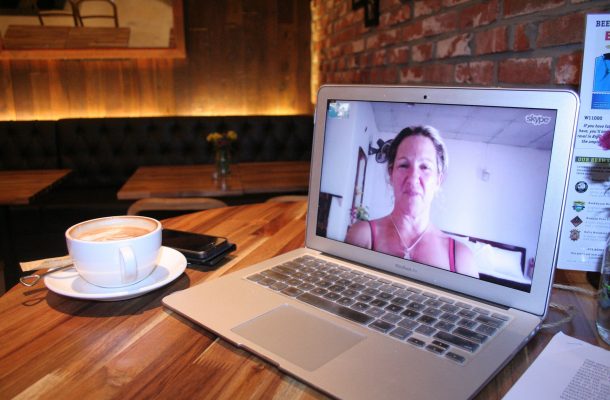How to run successful virtual meetings

Doing anything by distance takes twice the time and is half as good. We have to navigate time zone differences, language barriers and technological inconsistencies—whilst still running effective meetings.
The three biggest criticisms of participants in virtual or distance meetings are that people are not fully present on the call and are checking email or having side conversations with their phone; that often the speaker or presenter simply reads the slides; and that they go on for too long and much of the content is not relevant to everyone.
And in case you are wondering if virtual meetings will affect you in the future, here are some stats from an article by John Branded from Inc.com.
• 75% workforce will be millennials by 2020 who believe they can work from anywhere at anytime
• 75% of business travellers take 3 devices with them with the primary device being a smart phone
• 62% of people work from home or at offsite locations
• 88 percent of HR managers who are reporting that employees have quit due to a lack of telework flexibility.
Unfortunately, if our face to face meetings are bad, then it’s likely our virtual meetings will be twice as bad (at least!). Good meeting protocols, for physical or virtual are important, such as:
• Be prepared – make sure everyone knows why they are there and what is expected of them. Send out an agenda, or at least a purpose statement so that people are clear about the reason for the meeting.
• Be punctual – start and end on time. As the meeting convenor, be online at least 10 mins earlier so you can manage any tech issues.
• Be present – Keep it short. Distractions are everywhere so by keeping virtual meetings to 25 minutes or less, you are more likely to keep people focused.
In addition to improving how we meet generally, when it comes to virtual meetings, there are other things we need to consider.
Use the camera
This is particularly useful for 1:1 meetings or smaller groups. Not so useful once you have more than 6 people on the call. Using the camera creates a stronger connection, and we gain access to the visual cues that just an auditory interaction can’t provide. Of course, there are exceptions. Your American team mates on those late-night conference calls don’t need to see you in your pyjamas. When videoconferencing:
• Speak clearly and slowly. This is especially important for multicultural meetings. Accents can be hard to understand.
• Move and gesture slowly and naturally. Depending on the bandwidth, movement can slow things up, or create pixelated images.
• Look into the camera. Don’t look at yourself on the screen.
• Dress appropriately. Often we think that distance means we can be more casual, but this is not true; we still need to be professional. You also need to think about colours and patterns that may be jarring on the screen.
• Put your microphone on mute. When you are not speaking, be aware of background noise and keep your movement to a minimum.
• Use the ‘hands up’ function. This is a better way to let people know you have something to say, rather than speaking over the top of others.
• Stay focused and present. Keep focused on the task at hand, just as you should in an in-person meeting.
• Take your watch off. Put it on the table next to you so it doesn’t bang or scratch as you move around. Remove anything that scratches, clangs, bangs or jingles.
Run it like a radio show
Next time you are listening to the radio, pay attention to how the announcer refers to the audience.
Typically, they don’t say, ‘Welcome everyone out there in radio-land’. They say things like, ‘Thank you for joining me today’.
This is because they realise that the relationship between the radio announcer and listener is one-on-one. The listener is often alone in a car, or sitting at a desk, or listening via headphones, so referring to ‘everyone’ creates a disconnect.
It can be the same with running virtual meetings. In many cases the participants are sitting in a room, or at their desks with headphones on, looking at a screen. Even when using the camera, the radio principle applies to create inclusion and engagement.
Instead of saying “Welcome everyone to the meeting” try saying “I would like to welcome you to the meeting.” Instead of “Thank you all for coming” try “Thank you for making the time”. Don’t say “What does everyone think” but “What do you think” and rather than “Who has a question” say “What question do you have?”
Rather than say “It’s up to all of us”, say “It’s up to you”, and instead of “We have all done very well” make it more personal with “You have done well”. Don’t claim that “Everyone would agree” but say “You would agree”, and instead of “We all” use “I, or you”. Don’t say that “Many of us have” when you mean “You have”.
Tell ’em and tell ’em again
Everyone in a meeting has to have a role. This is especially important in a virtual meeting. You need to be very clear on what level of participation you need from everyone involved. Let them know in advance you may call on them specifically for input or information. Remind them that we can’t afford for people to not be fully present. In addition, to get the best from your virtual or distance meetings you also need to:
• Use the video to see people’s faces, not to share slides
• Be considerate of other attendees’ time zones and schedule meetings appropriately
• Encourage those in remote locations to speak or contribute first
• Encourage people dialling in to book a room or private space for the meeting (not just be at their desk)
• Use different methods of communication to remind people of expectations of the meeting; instead of sending out an email, maybe take the time to send a personal instant message to make sure people are clear
• Make sure the meeting charter for recurring meetings is available for all
• Run a training session on how to effectively use the technology; don’t assume people just know how.
Given a choice, face to face meetings are always going to be more effective, but for those times when you need to do virtual meetings, remember that as the meeting leader, it’s up to you to set the tone and expectations, no matter where in the world people are.
Donna McGeorge is a speaker, author and mentor who aims to improve workplace effectiveness while challenging thinking on leadership, productivity and virtual work. Her book series, It’s About time covers meetings, structuring your day, and doing more with less is available in bookstores around Australia or can be ordered online via Donna’s website at www.donnamcgeorge.com.
.







